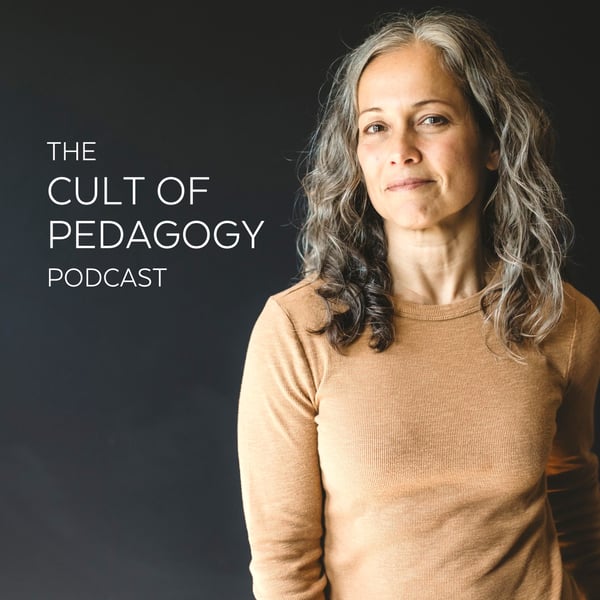196: Four Models for Doing Blended Learning in Your Classroom
The Cult of Pedagogy Podcast
Jennifer Gonzalez
4.8 • 2.4K Ratings
🗓️ 6 September 2022
⏱️ 37 minutes
🧾️ Download transcript
Summary
Even though many of us are back in physical classrooms this year, blended learning offers a way to weave together online and offline learning to position students at the center of the learning process. Instead of reverting back to a teacher-led, whole-group instructional model, blended learning can free us from the front of the room and allow us to work directly with individual and small groups of learners. In this episode, Catlin Tucker shares four specific models teachers can follow for structuring blended learning lessons and units to suit different purposes.
-------------------
Thanks to CoderZ and Today by Studyo for sponsoring this episode.
----------------
Check out Catlin's book, The Complete Guide to Blended Learning (affiliate link).
Transcript
Click on a timestamp to play from that location
| 0:00.0 | This is Jennifer Gonzalez welcoming you to episode 196 of the Cult of Pedagogy Podcast. |
| 0:06.0 | In this episode we will be exploring four models for using blended learning in your classroom. |
| 0:23.0 | Once upon a time, the content of a formal education came to students through one of two pathways. |
| 0:29.0 | They either listen to it in a teacher's lecture or they read it in books. |
| 0:33.0 | Now technology has opened up more pathways. |
| 0:36.0 | Students can read online articles, watch videos, participate in digital simulations, |
| 0:42.0 | and do interactive lessons at whatever time and pace works for them. |
| 0:47.0 | While teachers are freed up to do more one-on-one work with students like conferencing, assessment, and small group instruction. |
| 0:56.0 | This weaving together of technology-based and face-to-face instruction is most often referred to as blended learning. |
| 1:03.0 | And if a teacher can get that weaving process right, it can result in far more personalized learning for students |
| 1:10.0 | and much more satisfying work for teachers. |
| 1:13.0 | But that's the key, getting the weaving process right. |
| 1:17.0 | Because if you don't have a good plan for blended learning, you can end up wasting time and creating frustration for yourself and your students. |
| 1:25.0 | And that is where today's guest, Katlyn Tucker, can help. |
| 1:29.0 | For quite a few years, every time I wanted to send a teacher some resources about blended learning, my go-to was Katlyn Tucker. |
| 1:37.0 | Through her blog, Tucker had regularly shared how she had restructured her teaching so that she no longer took work home at night or on weekends, |
| 1:46.0 | keeping all of the instruction in her high school English classroom. |
| 1:51.0 | She did this through stations in which students worked sometimes in groups, sometimes independently, and sometimes directly with her. |
| 1:59.0 | Having been an English teacher myself, I was fascinated by her process because it would have made my own work far more sustainable in the classroom. |
| 2:08.0 | Since then, Tucker has written a handful of books on blended learning. And when I saw that she had a new one called the Complete Guide to blended learning, |
| 2:16.0 | it seemed like the perfect time to have her on the podcast to share some of what she knows. |
| 2:20.0 | In the book, Tucker explains exactly what blended learning is. |
... |
Please login to see the full transcript.
Disclaimer: The podcast and artwork embedded on this page are from Jennifer Gonzalez, and are the property of its owner and not affiliated with or endorsed by Tapesearch.
Generated transcripts are the property of Jennifer Gonzalez and are distributed freely under the Fair Use doctrine. Transcripts generated by Tapesearch are not guaranteed to be accurate.
Copyright © Tapesearch 2025.

